Sickle Cell Disease Guidelines Patient Representative Stories
Rae Blaylark
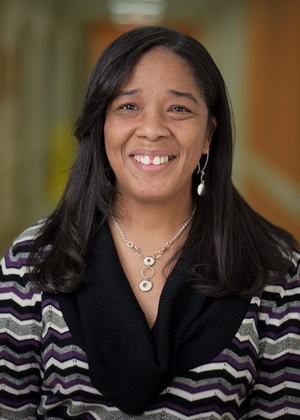
Rae is the mother of a young adult living with Sickle Cell Disease (SCD). Her son, now 23 years old, was diagnosed at two weeks of age through newborn screening in Minnesota, where they live. As a single, first-time parent, Rae had the difficult job of juggling both the day-to-day challenges of motherhood with the added complexity of parenting a child with SCD. She credits her strong family with helping her on this journey, but the experience was new to all of them.
Rae took this responsibility and her role very seriously, but she acknowledges that there was a steep learning curve for both her and her son. Over the years, he learned from her and she learned from him. In fact, she says in many ways she learned as much from her son as she did from his doctors.
Part of Rae’s learning experience has been learning to see beyond her own immediate situation. “I wanted to be able to be a part of conversations that could in fact shape the future of how SCD is treated in a clinical setting, emergency setting, and in the medical community’s overall understanding,” she said. It is that sentiment, and her personal experience, that led her to participate in the development of new ASH Clinical Practice Guidelines on SCD.
She listed three specific goals for the guidelines:
- First, she hoped that people would embrace and use them, particularly physicians who don’t see a lot of people with SCD.
- Second, she’d like these guidelines to get into the hands of people in the emergency rooms where people with SCD often go for treatment, because she believes they could positively impact how health care providers interact with individuals and family members. Often, she says, clinics and hospitals think they have it figured out. Yet there are new developments and the guidelines can provide them with the most current recommendations.
- Finally, she says, the guidelines are important from a community perspective. “It is important that we understand how to use these recommendations as an advocacy tool – we have to understand our own disease and marry what we know about our bodies with what we know about the recommendations so that we can be affective advocates.”
Overall, Rae says that the ASH Guidelines on SCD will be essential to improving outcomes for the SCD community – on the way to getting a universal cure – and fostering a reality where there are fewer deaths and better quality-of-life for individuals and their families.
Ronisha Edwards
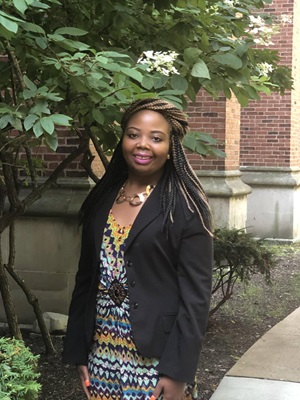
Diagnosed at birth, 27-year-old Ronisha Edwards finds that the biggest aspect of having Sickle Cell Disease (SCD) has been learning to deal with one of the disease’s most common complications: pain. Ronisha says that there are two kinds of pain – acute and chronic. Acute, she says, is a crisis. It feels sharp, stings, and burns. She likens it to the feeling you might have if an elephant sat on your chest or you had your hand slammed in a car door repeatedly. You don’t know when it’s going to come, but it’s debilitating when it does. And then there is chronic pain, which is a dull throbbing and swelling that you get used to and is constant almost every day of your life.
In Ronisha’s words: “It is a complicated thing to learn to take care of myself and my body,” she said, “I’ve been able to learn how to manage the disease and how to live with it and make the best out of my life. I didn’t choose this, but it is still possible to be who I want to be with this disease."
For Ronisha that has meant giving back to other people living with SCD as a licensed medical social worker in a hospital setting. She works with pediatric SCD patients who are transitioning from pediatric to adult care, which can be complicated for the patient on several levels, something Ronisha knows firsthand. Because of what she has learned, both professionally and personally, she feels she is well-positioned to help pediatric patients manage their health care while still feeling they are a productive and valuable part of society. She wants to lead by example and demonstrate that with SCD and its complications, it is still possible to follow your dreams and achieve what you want in life.
Ronisha hopes that the ASH Clinical Practice Guidelines on SCD are understood not only by medical staff, but patients, too, so that they can be stronger advocates for themselves when navigating their care.
Elodie Ontala
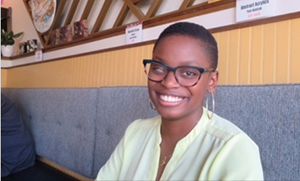
Elodie lives in Milwaukee, Wisconsin, where she works for a non-profit organization that supports arts programming for public schools and works with teachers to enhance curriculum through art. Elodie also has Sickle Cell Disease (SCD) and has worked to enhance education around SCD, both through her participation in clinical trials as a study participant and as a patient representative in the development of the ASH Clinical Practice Guidelines on SCD.
Her own education started early. Diagnosed when she was three years old, Elodie recalls the constant pain she experienced living with SCD. As a teen, she ended up in the hospital once or twice a month, missing significant amounts of school and not participating in any sports or social activities. Her pain was, and continues to be, so severe that it requires the strongest forms of pain relief. SCD has greatly impacted her life and led to severe complications, including an ocular occlusion (a blockage in the blood vessels of the eye, which can cause vision loss) that impaired her vision. Those experiences inspired Elodie to participate in clinical trials that could lead to lifesaving and life-improving treatments for SCD and its complications.
“I understand the historical reasons as to why people don’t want to participate in clinical trials,” she said, “but in my case, my physician has always been open, honest and transparent with me in my treatment.” That basis of trust influenced her thinking when he approached her about participating in a clinical trial and continued to drive her participation in the many others that followed. Elodie says that her trust in her physician combined with the strength of her support system made her feel secure and strong enough to handle any potential complications. She emphasizes that the rapport and trust developed between physicians and patients is a foundational component of clinical trial participation.
Elodie’s experience with the complications and various treatments for her condition, combined with her participation in clinical trials, made her a natural when it came to be a patient representative for the ASH Clinical Practice Guidelines on SCD. She knows the importance of having evidence-based guidelines available, noting that treating a patient with SCD is a rarity for many physicians and nurses. When they turn to guidelines for help, she feels the patient voice and experience needs to be included. She hopes the guidelines are the basis for great change in the treatment and understanding of SCD.
Maria Rivera
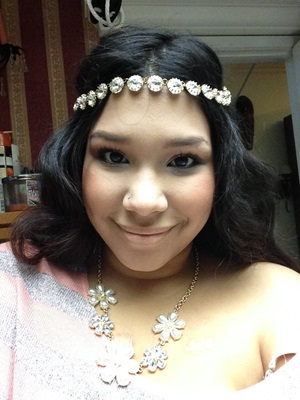
Maria Rivera lost her daughter, Jazmine Alexis Rivera, due to complications from Sickle Cell Disease (SCD) when she was just 25 years old. Her daughter started developing symptoms at birth and at two years of age she had her first blood crisis. She developed pneumonia, her lungs collapsed, and she had a silent stroke. Her life with SCD continued and, after graduating from college, she began work for the Sickle Cell Community Consortium as a Social Media Marketing Manager. Jazmine was very active and knowledgeable about social media and started her own YouTube channel, “Beauty within Sickle Cell,” to educate people about SCD. It was important education, her mother notes, because most people did not perceive that a Latina could be someone with SCD.
In short, Jazmine’s life was in many ways defined by her SCD and, as a result, it has made improving education about the effects and impacts of SCD a major priority for her mother, Maria. Maria has sought to continue her daughter’s work, which is why she helped develop the ASH Clinical Practice Guidelines on SCD. “I wanted people to be aware that SCD impacts many different kinds of people as well as the fact that there were many different types of SCD.”
Maria has said that the experience provided her with the opportunity to not only contribute perspective about her and Jazmine’s experiences, but to also learn more herself. That was important to her.
Maria stresses that while her daughter is gone, it is important to continue working to educate other families and other parents and train them to be advocates for the SCD community. “We have to participate and show the world the needs of the patients and their families.”
Teonna Wolford
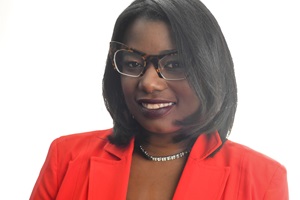
There was a big difference between Teonna’s childhood and her teen years. When she was young, she did not feel the effects of Sickle Cell Disease (SCD) that often. But when she grew into adolescence, things began to “spiral out of control” as she puts it. She began to experience crises – “avascular necrosis” – and surgeries for her joints, hip replacements, and multiple blood transfusions, one of which caused a reaction that led to liver failure. In high school she experienced multiple silent strokes.
She attended a high school in Baltimore that had never had a student with SCD. She missed many days of school as a result of her condition, but when she returned, she would not find much in the way of compassion and understanding. At one point, a teacher told her that it would be so much easier if she had cancer because then a schedule could be devised when she was going to miss school during treatments, but that SCD was too unpredictable. Her academic advisor told her that she should withdraw from private school and enroll in a public school instead, because public schools would be better prepared to accommodate her and her unique circumstances.
Teonna had dreams of going to college, but she also recognized that her body was failing her. When she was 19, she was approached about a bone marrow transplant, which can be curative for some patients. She did not have a perfect match donor, but she entered a clinical trial where a half match transplantation from a sibling or parent would be used. She knew there were substantial risks, but she also knew she had limited options and underwent the transplant. Unfortunately, after radiation, chemotherapy and a long hospital stay lasting several months, her body ultimately rejected the transplant.
Later in life, she attended conferences where she would hear about success stories with patients who received bone marrow transplants. She felt frustrated that there was so little attention being paid to the other side of SCD – her side – where transplants are not always successful. She did not want her voice to be lost.
Teonna participated on a panel for the ASH Clinical Practice Guidelines on SCD with another patient who had a positive transplant experience. She felt that it was important for the panel to hear about both outcomes.
Today, Teonna is 28 years and pursuing a clinical psychology degree. She takes on frequent speaking engagements to make sure her perspective is part of the SCD narrative. She is making sure her voice is heard.
Fouza Yusuf
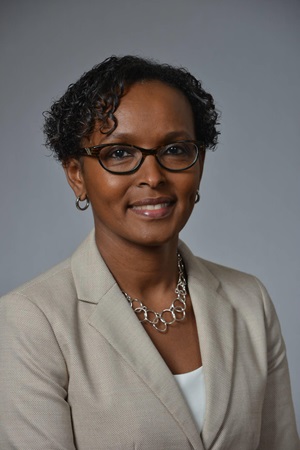
Fouza Yusuf has a daughter with Sickle Cell Disease (SCD), and she has been involved in her care since the time she was a teenager until she went off to graduate school. She has continued to contribute to her daughter’s care into adulthood whenever she has a pain crisis or is admitted to the hospital.
The transition from care as a pediatric patient to an adult has been difficult for Fouza’s daughter. There are a lot of changes that must take place when transitioning to adult care, and it’s important to prepare people living with SCD for the challenge. Fouza knows this firsthand. She and her daughter grappled with numerous access to care issues. While seen readily as a pediatric patient, during their first trip to the emergency room as an adult, Fouza and her daughter experienced a three-hour wait for care. She also dealt with insurance challenges when she turned 26 and was no longer allowed to remain on her mother’s insurance and had to find her own.
“Sometimes as a caregiver, you are in the role of an advocate and so when you take a patient to the hospital and they are in extreme pain, your role is to know what they are going through and to advocate for them,” Fouza said.
Part of that advocacy for Fouza included being a representative on a panel supporting the development of the ASH Clinical Practice Guidelines on SCD. She participated as a caregiver representative because she was looking for opportunities to make sure patients’ voices were reflected in guidance for physicians. There was one particular question in the guideline development process that dealt with opioids. “With the current climate of opioid abuse and all the media exposure around it – I did not want to see the guidelines limit opioid use by SCD patients and negatively impact those patients who rely on opioids for taking care of their pain.” Ultimately, she hopes that with a single set of guidelines for providers to follow, no matter where a patient is seen, the care the patient is getting becomes more consistent, regardless of age.